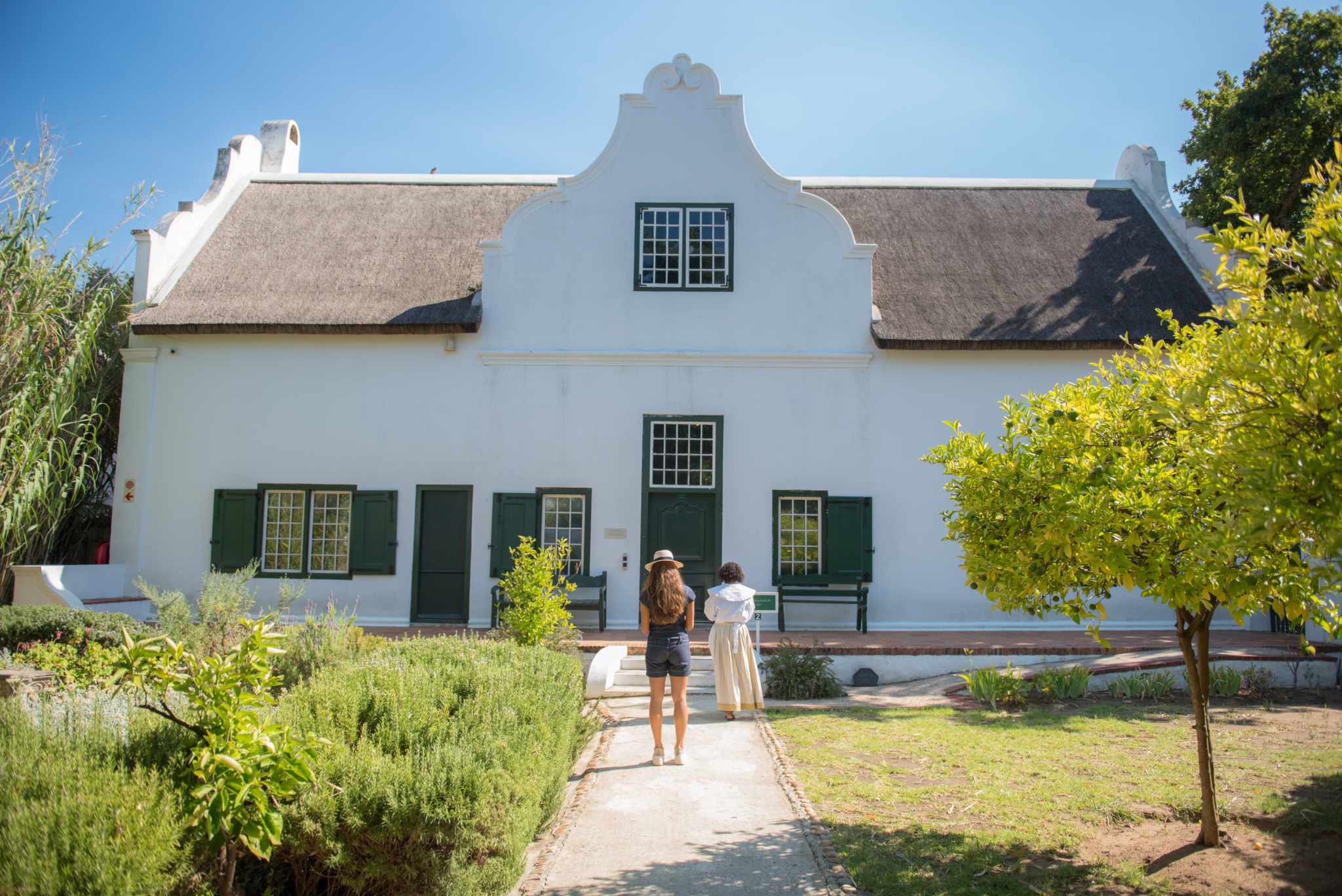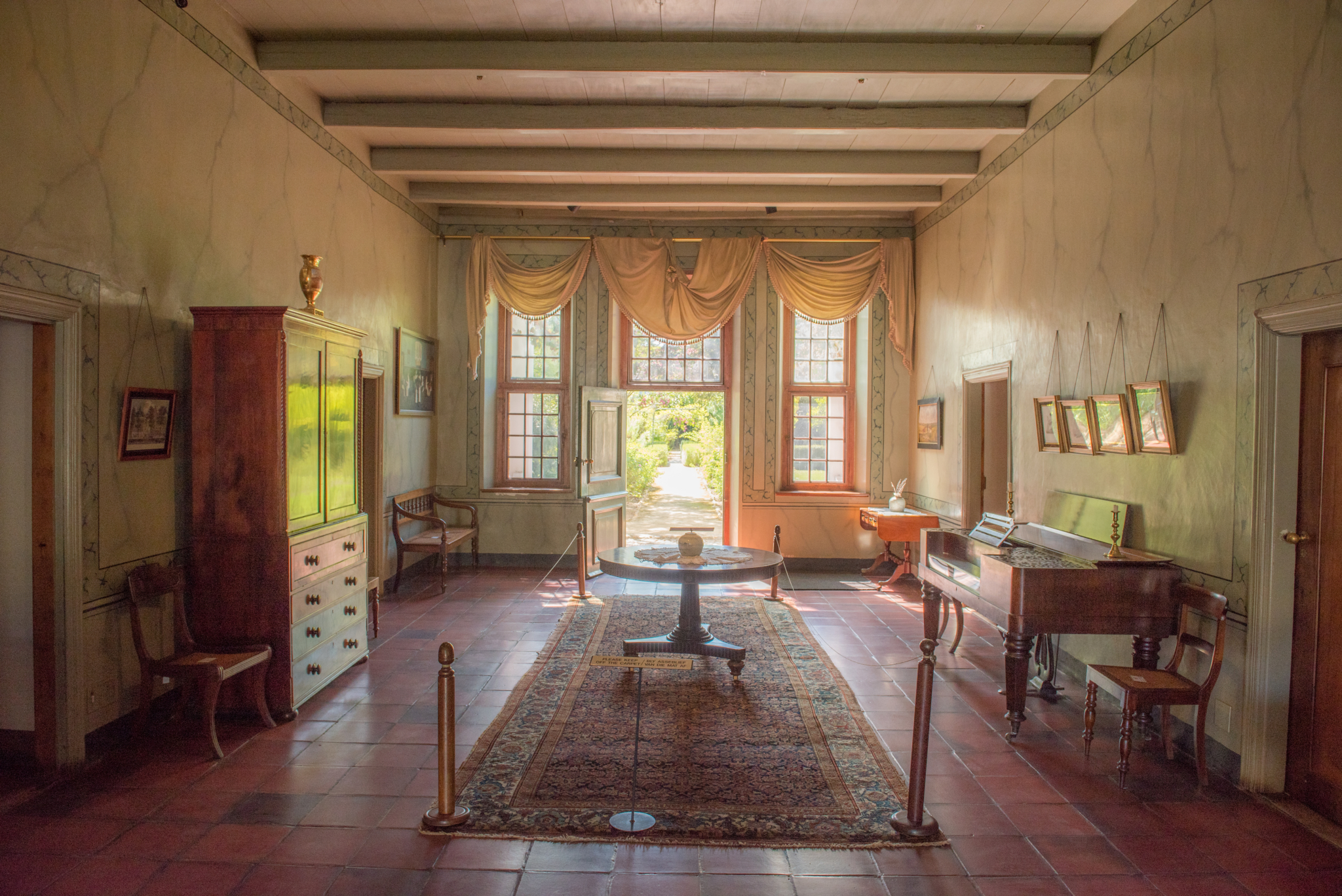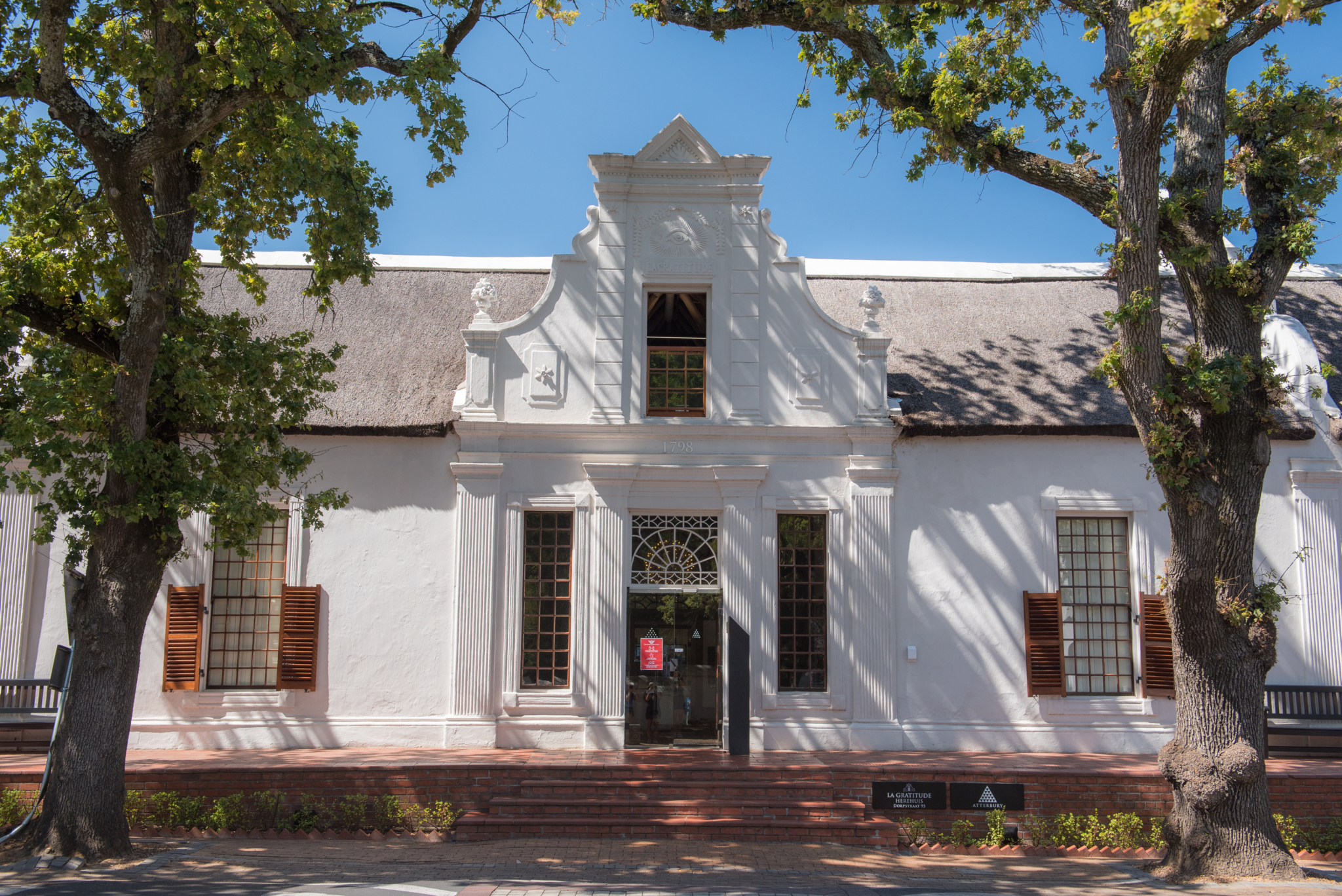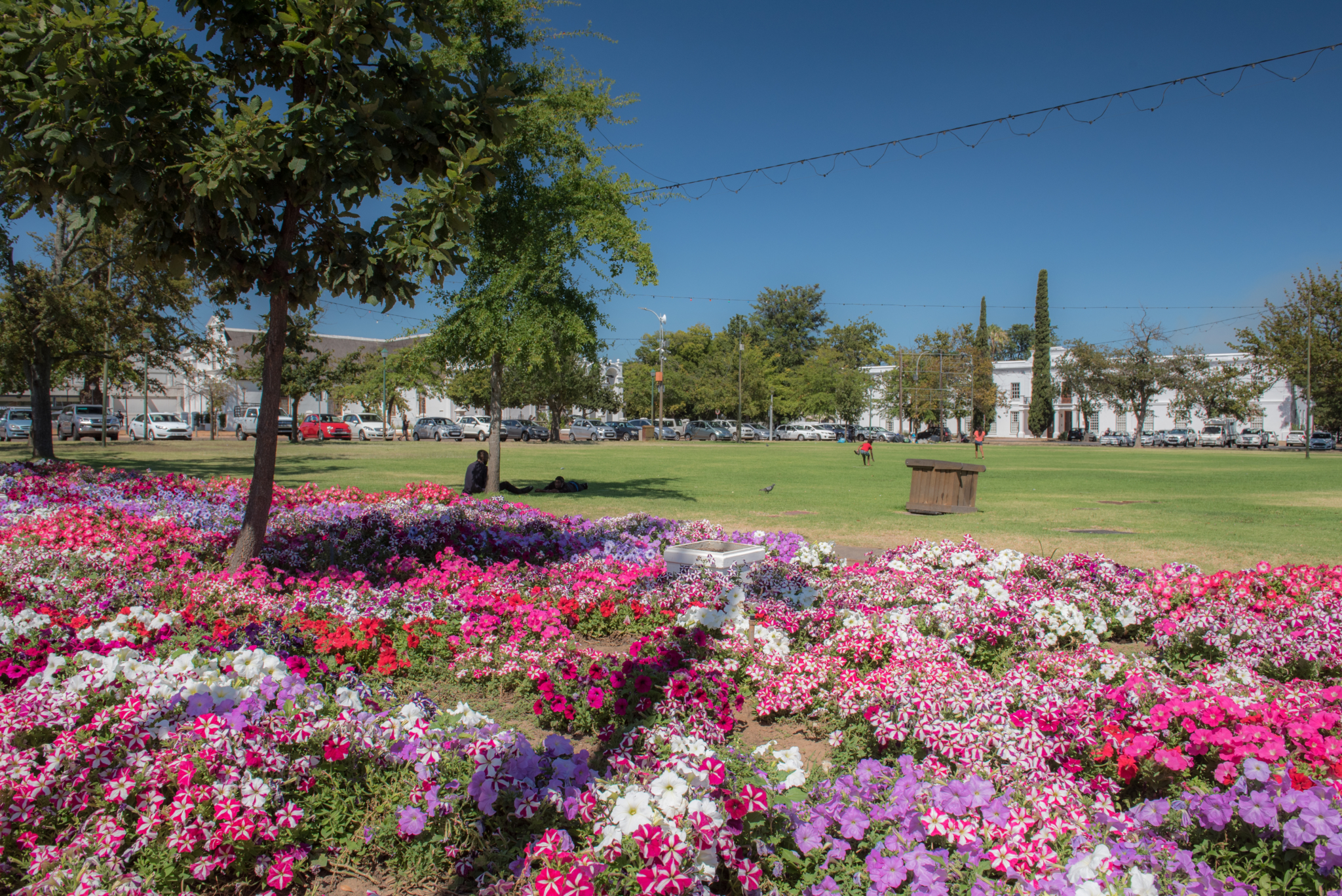The best way to get a feel for the spirit of old Stellenbosch is to take a slow meander through its heart. I parked in the leafy shade of Ryneveld Street and paid a visit to the Stellenbosch Village Museum to brush up on town history before setting off on my walk.

This delightful museum complex comprises four restored houses that give one a taste of colonial Stellenbosch. Starting from the reception building, I moved from house to house, each one with a local guide in period costume to impart fascinating titbits of history.
First up was Schreuderhuis, built in 1709 and one of the oldest townhouses in South Africa. The ‘pioneer’ interiors – vegetables and salted fish hanging from rafters and primitive furniture – are typical of a Stellenbosch home of the period 1680 to 1720.

Next was Blettermanhuis with its H-shaped floor plan and six fine gables, restored and furnished to illustrate a wealthy home of the 1750 to 1790 period. Adjacent Grosvenor House is a fine example of a double-storey, flat-roofed patrician townhouse, with a large garden, and represents the period 1800 to 1830. Finally, I visited the house of O.M. Bergh, a typical mid-19th century home with decorative wall-paper and elegant furniture from the period 1850 to 1870.
Picking up a town map at the museum’s reception, I set off on my walk, passing the gracious, Moederkerk (1735) with its tall neo-Gothic spire (1863) that dominates the town. Reaching Stellenbosch University’s ornate Theology Faculty, I turned right into Dorp Street. Packed from end to end with national monuments, this old thoroughfare boasts a wide range of architectural styles. I took my time, photographing the many gabled buildings and oak trees casting their dapples along this, arguably South Africa’s most beautiful street.

At the De Akker Pub – a famous and often rowdy student haunt – I turned right into lovely Herte Street and found my way to the Miniature Toy Museum. This houses a collection of 1:12 scale miniatures, antique dolls, dinky cars, room boxes and toys of every shape and kind. There’s even a lifelike miniature of South Africa’s famous Blue Train.
At the end of Mark Street, I came to the old VOC Kruithuis, now a small military museum. Built in 1777, this was originally a powder magazine for the Dutch East India Company. It houses a fine collection of firearms, cannons and military uniforms.
Crossing the lawns of the Braak, I marvelled at the buildings surrounding this large village green, among them St Mary’s Church (1852) to the north and a lovely Rhenish church (1823) to the south. Heading up Plein Street to complete my circuit, I stopped at Bootlegger Coffee Company for an iced coffee. It was a chance to mull over my map, retracing in my mind the living history of this beautiful Boland town.
Book a walking tour of Stellenbosch with Adventure Shop.




















